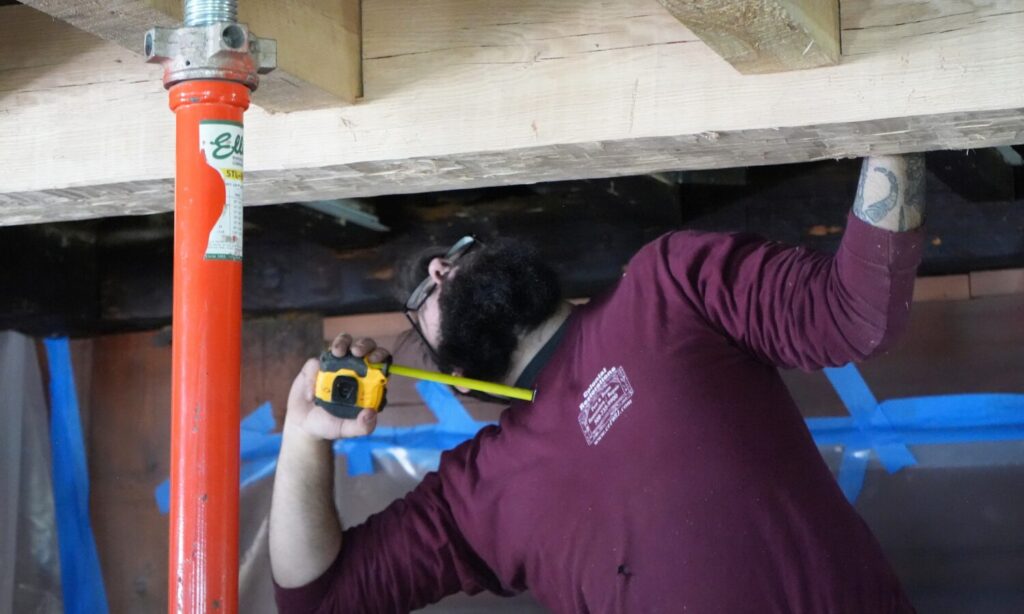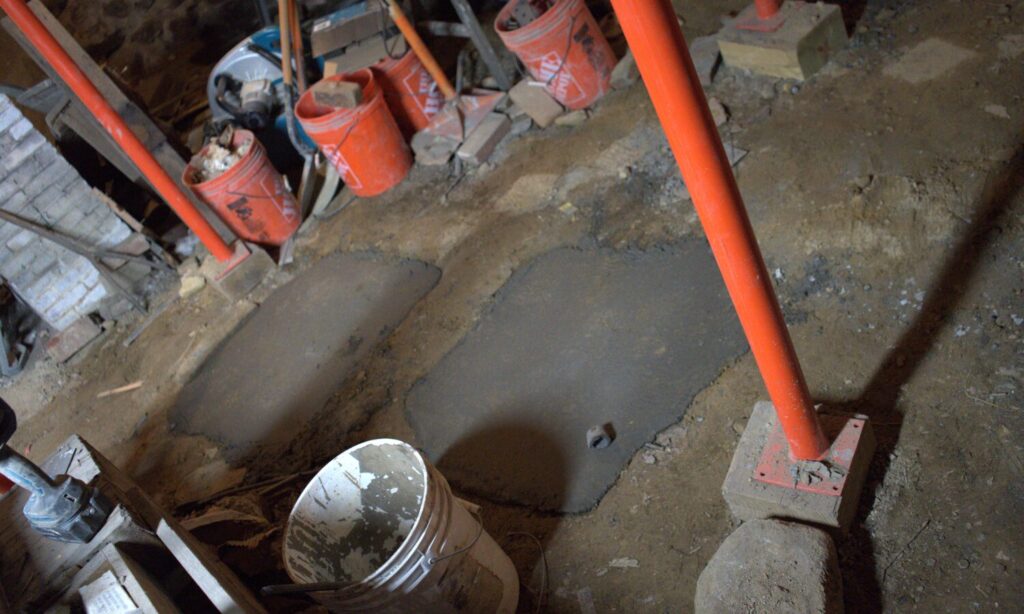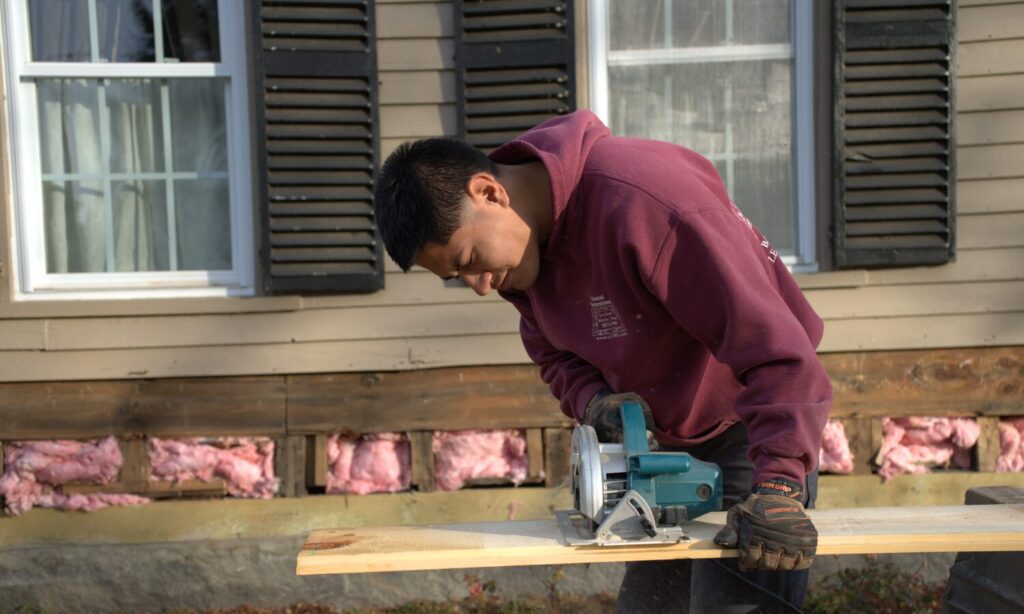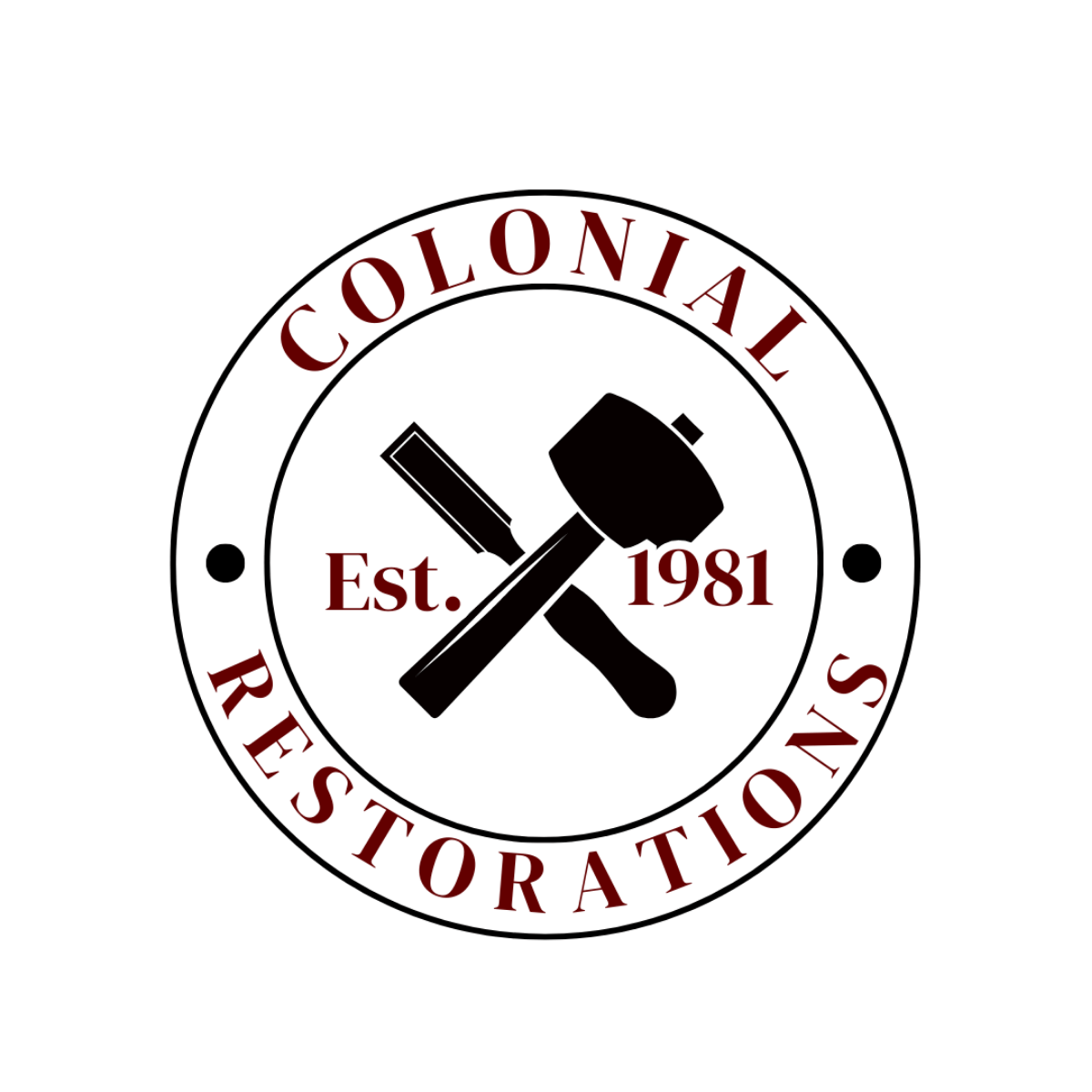
Restoring an old or historic home is no small feat; it’s a labor of love, patience, and precision. It doesn’t matter if your home dates back to the 1700s or the early 20th Century, every board, beam, and brick has a story to tell. To protect that history, a successful restoration begins with a specialist who prioritizes both structural safety and the preservation of character of your home.
Below, we’ve outlined the key steps every homeowner should take when approaching a home restoration project.
Step 1: Start with a Structural Evaluation and Inspection
Before any home restoration work begins, it’s critical to understand the condition of the entire structure from the ground up.
We believe that a home’s beauty is only as strong as the structure beneath it. That’s why we begin with a full structural evaluation, looking closely at sill beams, floor joists, posts, and the overall timber framing system. This step helps us identify any rot, sagging, or compromised materials that could affect the integrity of the home.
At Colonial Restorations, we specialize in evaluating old homes and barns with a trained eye for post and beam construction. Our structural inspections are a deep dive into your structure’s history and condition, unlike a typical home inspection.
Step 2: Hire a Qualified Specialist with Historic Experience
Restoring a historic home is much different from renovating a newer one because it requires a thoughtful approach, respect for original craftsmanship, and a thorough understanding of traditional building methods.
With decades of hands-on experience, we’re not your average home restoration contractor. We specialize in structural restoration, from sill replacements to beam repairs, and we’re very familiar with the nuances of antique framing and materials. We don’t cut corners, and we use materials that are high quality and that match style and time period of the home.

Step 3: Understand and Secure the Proper Permits
Navigating the permitting process during your home restoration project can be overwhelming, especially if your home is part of a historic district or under preservation guidelines.
Before work begins, we’ll help you identify what permits may be needed for structural repairs, sill replacements, or barn restorations. Every town or city in Massachusetts may have different requirements, and it’s important to stay compliant to avoid delays or fines.
Our team is familiar with local building departments across Central Massachusetts (and New England) and can provide guidance to help the permitting process move smoothly and efficiently.
Step 4: Restore in Phases, Not in a Rush
Historic home restoration is a process that cannot be rushed. Rushing your home restoration project can mean missing hidden issues or damaging what can’t be replaced.
We typically recommend beginning with structural restoration work, like sill beam replacement or timber frame stabilization. Once the foundation and frame are sound, you can then move on to other areas.
Our phased approach allows for better planning, budgeting, and execution, ensuring each part of your home is restored the right way, the first time.
Why Structural Restoration is Important
A home restoration project isn’t a weekend project. Every phase requires patience, especially when unforeseen issues arise. While cosmetic updates might improve appearances, it’s the bones of the building – the sills, beams, and posts – that determine how long it will truly last. If you’re putting in the work of a home restoration project, big or small, it’s important not to overlook any potential structural damage.

One of the most overlooked, yet most critical components of an old home is the sill beam. This horizontal timber sits directly on the foundation and serves as the base for the entire frame of the house. Over time, exposure to moisture, pests, and general wear can cause the sill to rot, sag, or crumble.
Signs of a failing sill include:
- Sagging or uneven floors
- Cracks near windows and doors
- Drafts or visible gaps between the framing and the foundation
- Doors that no longer open or close properly
If just one of these issues arises, don’t compromise the structural integrity of your home by not considering a sill beam replacement.
Let Us Help You Bring Your Home Back to Life!
At Colonial Restorations, we’ve spent years helping homeowners protect and preserve their historic properties. We restore old homes and buildings with skill and exceptional care.
If you’re considering a historic home restoration project, reach out to Brad Green to schedule a structural inspection at info@cr1981.com.

Leave a Reply